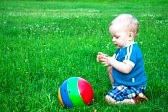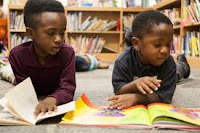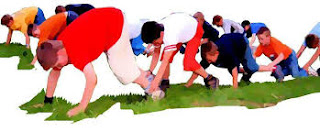This is a previous post, originally written on 3/13/16, but as families are planning vacations for the summer and Spring Break, I thought this would be a good time to revisit how to make travel time more appealing.
Spring Break and Summer Vacation are just around the corner—do I hear a “Hallelujah”? As exciting as vacations in spring and summer can be, there is always the lurking concern in the back of our minds, “How are we going to get through the long drive with the kids?”
What is the goal of a vacation? For most people it is to enjoy new places and relax. Make the road trip more than a constant battle over which movie to watch. My husband and I traveled extensively when our children were little, so I know how daunting entertaining little ones in the car can be. From my experience let me share a few tips to making it to your destination and home again without pulling out all of your hair--take the stress out of your travels and make it fun and educational!
What is the goal of a vacation? For most people it is to enjoy new places and relax. Make the road trip more than a constant battle over which movie to watch. My husband and I traveled extensively when our children were little, so I know how daunting entertaining little ones in the car can be. From my experience let me share a few tips to making it to your destination and home again without pulling out all of your hair--take the stress out of your travels and make it fun and educational!
 |
| Travel Can Be Fun for All! |
Making a running list of Things to be Done or Packed several weeks before a trip can decrease stress. Put it on the refrigerator or make a note on your Smart Phone. Add to the list every thought that pops into your head at odd hours of the night or day, so you can address it at a later time.
Be Realistic in Your Travel Plans
Planning to travel 12 hours straight every day in a car for 3 days to go across country with an 18 month old, 3-year old and 5-year old is not realistic unless you plan on checking yourself into a mental hospital on your return!
Be prepared to stop every 2 hours to stretch and for Potty Breaks. Vacation is not about, “Conquering the Road,” as much as my husband would disagree!
Take Appropriate Travel Toys
Large toys, toys with 2000+ parts and pieces, toys that are messy or noisy should be left at home! Appropriate travel toys will keep children entertained without driving their parents nuts!
Each child should have a toy bag or small backpack with their own toys. Spend time with each child in advance, thoughtfully planning what should go with them on the trip. If they need their special blanket or stuffed animal to ensure a good night’s sleep, make sure you include this!
If we had a trip of over 2 hours, I would buy in advance several new, small, low-cost toys along with a juice box, package of small crackers or cookies, gum etc. for each child. Remember to choose snacks that don't melt! I then wrapped each ‘gift’ and put it in the children’s backpacks the night before the trip. Every hour the children could open one of their packages (who doesn't look forward to opening a gift?!), giving them something new to play with or enjoy for the next span of time. I called them our Travel Surprise Packages and I can’t tell you how much pleasure my kids received from this simple act. (See our commercial website: http://www.proeducationaltoys.com for pre-wrapped gift boxes for girls or boys and other toy ideas for travel).
Strap or hook baby toys to the car seat whenever possible. Older children might like a lap tray with a raised rim that allows them to keep their toys and snacks in a perfect position for playing and eating while preventing the items from escaping and rolling under the seats of the car! (Check out our fabulous Travel Tray Here)
Strap or hook baby toys to the car seat whenever possible. Older children might like a lap tray with a raised rim that allows them to keep their toys and snacks in a perfect position for playing and eating while preventing the items from escaping and rolling under the seats of the car! (Check out our fabulous Travel Tray Here)
Stop at Grassy Rest Areas and Play
 |
| Taking a Break Actually Makes the Trip go Faster! |
Giving children (and adults!) a chance to stretch and move every couple hours is healthy for bodies and minds alike. The time spent playing will make the remaining time in the car go much easier!
Make a game of running from one tree to the picnic table. Time each child and try to better their time, best out of 3.
Play a quick game of kick ball, Frisbee, or ball toss.
Play a favorite dance tune on your Smart Phone and let everyone do a Wiggle Dance for 2 minutes.
Tell a Story
Start a story and let each person in the car add to the story. You could start with a story your children know well and let it take a new "twist". You can add places and people to the story from your current trip. Take several hand puppets and let each person use the puppet to tell a story!
Our children have fond memories of our travel times together. Remember that travel is part of the vacation and should be enjoyed! We welcome your comments and travel suggestions for young children. HAPPY TRAVELS!
Author: Trisha Roberts
www.proeducationaltoys.com
Author: Trisha Roberts
www.proeducationaltoys.com































